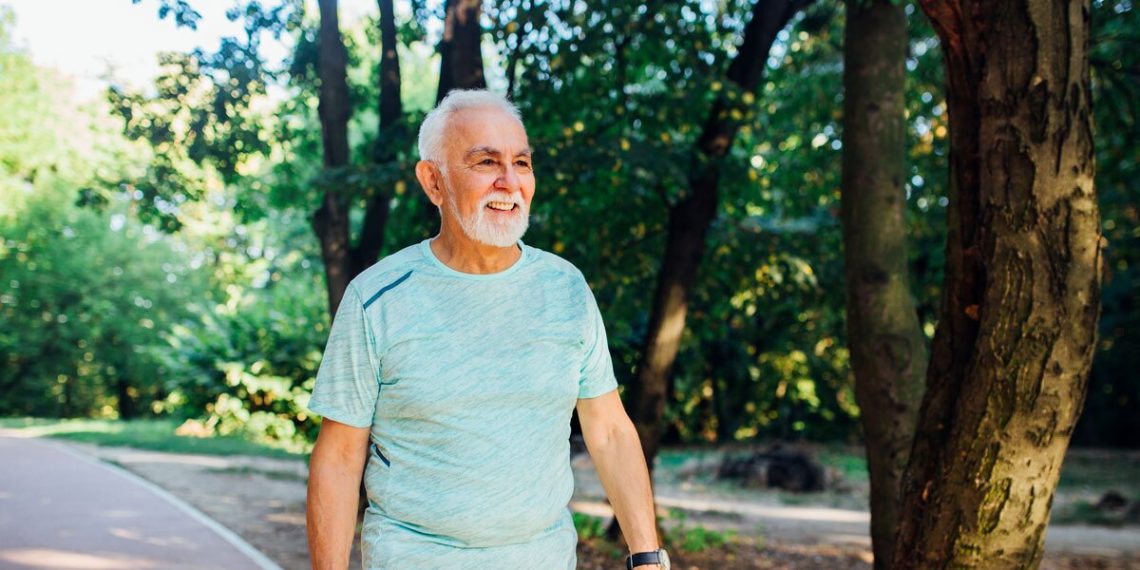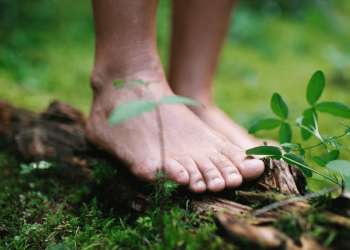In our modern world of perpetual motion and distraction, we walk thousands of steps each day yet how many of those steps do we truly take with awareness? We walk from room to room, from car to building, from obligation to obligation, often arriving at our destinations with little memory of the journey itself. Our bodies move forward while our minds race elsewhere, planning, worrying, or scrolling through digital feeds. But what if each step could become something more? What if walking could transform from mere transportation into a profound practice of presence and purpose?
This is the essence of walking with intention a practice that bridges ancient contemplative traditions with contemporary mindfulness, offering a pathway to greater awareness, clarity, and connection in our everyday lives.
Understanding Intentional Walking
Walking with intention means approaching each walk or even each step with conscious awareness and purpose. It’s the difference between sleepwalking through life and being fully alive in the present moment. When we walk intentionally, we’re not simply moving our bodies from point A to point B; we’re engaging in a deliberate practice that integrates body, mind, and spirit.
The concept draws from various wisdom traditions. Buddhist monks have practiced walking meditation for centuries, using slow, deliberate steps as a form of moving meditation. Indigenous cultures worldwide have long understood walking as a sacred practice, a way of connecting with the earth and honoring the journey itself. In recent years, modern psychology and neuroscience have begun validating what these ancient practices knew: intentional movement profoundly affects our mental state, emotional wellbeing, and even our cognitive function.
Unlike mindless walking, where we might reach our destination unable to recall the route we took, intentional walking keeps us anchored in the present. We notice the sensation of our feet touching the ground, the rhythm of our breath, the quality of the air around us. We observe our thoughts without getting swept away by them. We choose, moment by moment, where to place our attention and what to cultivate in our awareness.
The Power of Setting Intentions
An intention is not the same as a goal. While goals focus on outcomes and achievements, intentions focus on how we want to be and what we want to cultivate in the present moment. A goal might be “walk three miles today,” while an intention might be “walk with gratitude and openness to whatever arises.”
Setting an intention before walking creates a framework for your practice. It’s like programming your internal GPS—not just for where you’re going physically, but for the quality of consciousness you want to bring to the journey. This simple act of pausing before you walk to clarify your intention can transform an ordinary stroll into a meaningful practice.
Intentions work by directing our attention. Neuroscience shows that what we focus on quite literally shapes our brain structure over time. When we repeatedly set intentions for qualities like presence, compassion, or gratitude during our walks, we’re strengthening the neural pathways associated with these states. We’re training our minds to access these qualities more readily, both during walks and in daily life.
How to Set Intentions for Your Walk
Setting an intention doesn’t need to be complicated or time-consuming. Here’s a practical approach:
Before You Begin: Take a moment before your walk to pause. This might be just thirty seconds at your front door or in your car. Close your eyes if that feels comfortable. Take a few deep breaths to center yourself.
Reflect on Your Current State: Notice how you’re feeling physically and emotionally. Are you stressed, energized, scattered, peaceful? There’s no judgment here—simply awareness. Your current state might inform what intention would serve you best.
Choose Your Intention: Ask yourself: What do I want to cultivate during this walk? What quality of being do I want to practice? Your intention might relate to:
- Mental state: Clarity, calm, focus, creativity
- Emotional quality: Joy, gratitude, compassion, acceptance
- Physical awareness: Groundedness, strength, flexibility, breath awareness
- Spiritual connection: Presence, reverence, unity, openness
- Specific practice: Loving-kindness, letting go, non-judgment, curiosity
Frame It Positively: State your intention in positive terms. Rather than “I won’t think about work,” try “I will notice the beauty around me” or “I will focus on the sensations of walking.”
Keep It Simple: A single word or short phrase often works best. “Gratitude,” “Present moment awareness,” “Opening my heart,” or “Walking in peace.”
Set It Gently: Your intention should feel supportive, not like another item on your to-do list. It’s a gentle guide, not a rigid requirement.
Types of Intentions for Different Walks
Different situations call for different intentions. Here are some examples:
Morning Walks: “I walk into this day with openness and energy” or “I set a positive tone for the day ahead.”
Stress-Relief Walks: “I release what I cannot control” or “Each step grounds me more deeply.”
Nature Walks: “I walk in harmony with the earth” or “I receive the gifts of nature with gratitude.”
Urban Walks: “I find stillness within movement” or “I practice compassion for all beings I encounter.”
Walking Meditation: “I am fully present with each step” or “I walk to walk, nothing more.”
Creative Walks: “I open myself to inspiration” or “I welcome fresh perspectives.”
Healing Walks: “I honor my body’s wisdom” or “Each step is an act of self-care.”
The Impact on Practice Quality
The difference between walking with and without intention is profound. When we walk intentionally, several remarkable shifts occur:
Enhanced Presence: With a clear intention, we naturally become more present. Our attention has a focal point, which helps prevent the mind from spinning off into rumination or distraction. We find ourselves actually experiencing our walk rather than mentally rehearsing past conversations or future scenarios.
Deeper Embodiment: Intentional walking brings us into our bodies. We become aware of sensations we normally ignore the swing of our arms, the flex of our ankles, the expansion of our lungs. This embodied awareness has cascading benefits for stress reduction, body image, and overall wellbeing.
Emotional Regulation: When we walk with intentions related to emotional states whether cultivating calm or processing grief we create space for healthy emotional processing. The combination of physical movement and focused attention helps metabolize difficult emotions and amplify positive ones.
Increased Insight: Many people report that their most creative insights and problem-solving breakthroughs occur during intentional walks. When we walk with an intention of openness or curiosity, we create the mental space for new connections to form. We step out of our default thinking patterns.
Cumulative Benefits: Each intentional walk builds on the last. Like drops of water creating a river, consistent practice of walking with intention gradually transforms our relationship with ourselves, our environment, and our daily experience. We become more naturally mindful, even when we’re not deliberately practicing.
Greater Satisfaction: Intentional walks feel more meaningful and satisfying. Even a short ten-minute walk taken with clear intention can leave us feeling more centered and accomplished than an hour-long walk taken on autopilot.
Maintaining Your Intention Throughout the Walk
Setting an intention is just the beginning. The practice deepens when we remember and return to our intention throughout the walk:
Start with Awareness: Begin your walk by embodying your intention. If your intention is gratitude, start by feeling grateful for your ability to walk. If it’s presence, feel your first few steps with full attention.
Create Reminders: You might use natural markers each time you turn a corner, or every time you notice a bird, return to your intention. Some people use their breath as a reminder, reconnecting with their intention with every few breaths.
Expect to Wander: Your mind will wander. That’s not failure it’s completely natural. The practice is in noticing when you’ve wandered and gently returning to your intention, over and over again.
Stay Flexible: Sometimes your intention may shift during the walk, and that’s okay. If you started with an intention of energy but find yourself needing calm, allow your intention to evolve.
End Mindfully: As you complete your walk, take a moment to acknowledge your practice. Notice how you feel compared to when you began. This closing reflection reinforces the value of your intentional practice.
Integrating Intentional Walking Into Daily Life
The beauty of walking with intention is that it requires no special equipment, location, or time commitment. You can practice during your morning commute, a lunch break, an evening stroll, or even walking from your car to a store.
Start small. Choose just one walk per day to practice intentionally. As this becomes natural, expand to other walks. Eventually, you may find that intentional walking becomes your default mode, and the quality of your entire day shifts.
Consider keeping a simple walking journal where you note your intentions and any insights or experiences from your walks. This reflection deepens the practice and helps you notice patterns and growth over time.
Conclusion
Walking with intention is ultimately about bringing consciousness to an activity we already do every day. It’s about honoring the journey, not just the destination. It’s about recognizing that each step is an opportunity an opportunity to be present, to practice chosen qualities, to connect more deeply with ourselves and the world around us.
In a culture that glorifies productivity and speed, intentional walking offers something countercultural and deeply needed: the reminder that sometimes the most powerful thing we can do is simply to walk, one conscious step at a time, with clear intention and open awareness.
The path of intentional walking doesn’t require us to walk farther or faster. It simply asks us to walk more fully to show up completely for the experience of being a human body moving through space and time. And in that simple shift of attention, we may discover that we’re not just walking through life, but walking into life, one intentional step at a time.
- what is tai chi walking with intention
- mindful intentional practice
- intentional moving meditation
- mindfulness with intention
- intentional meditative practice
- principles of intentional walking
- intentional chi cultivation
- mind-body intentional practice
- intentional practice journey
- intentional meditation techniques






